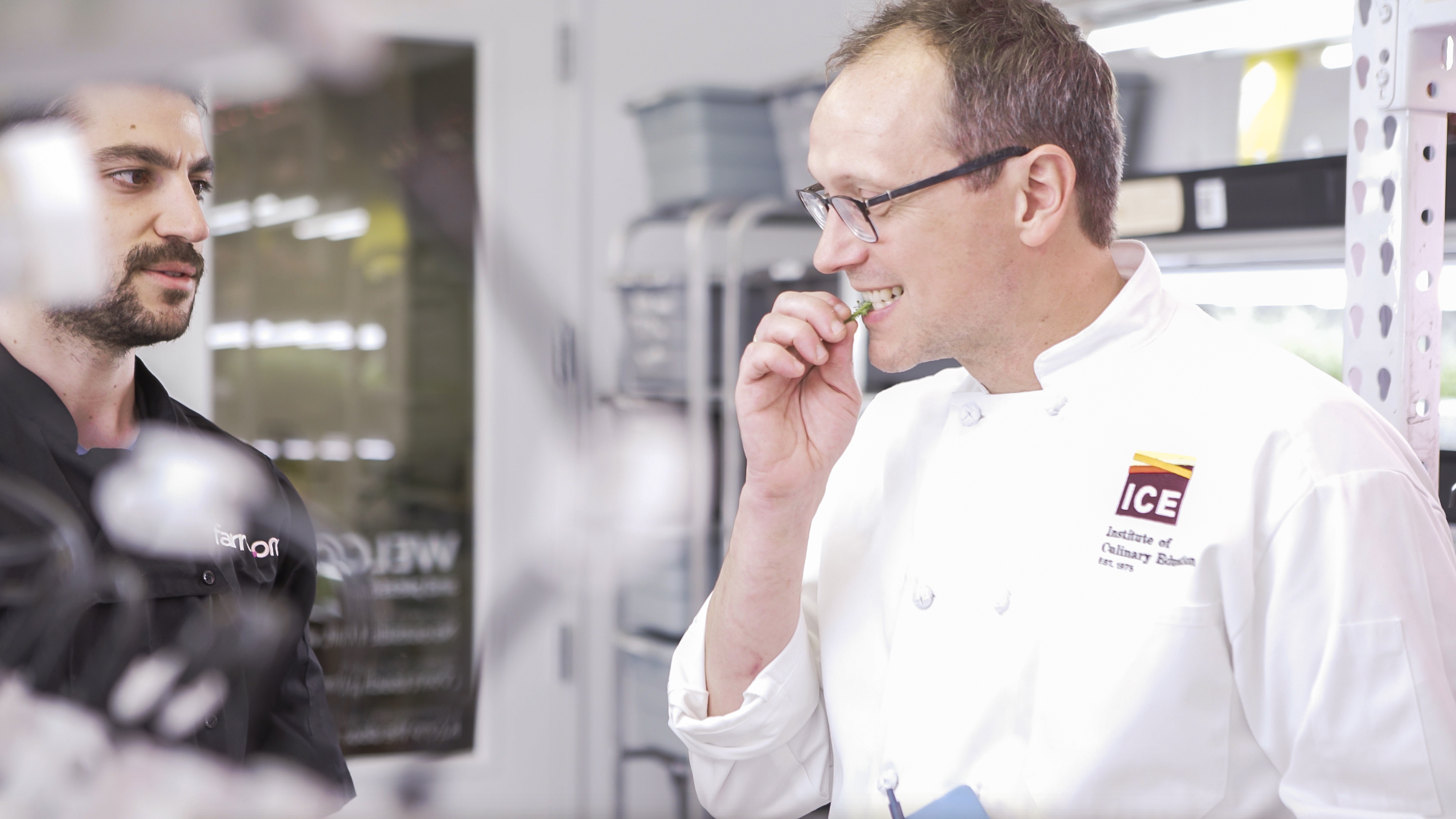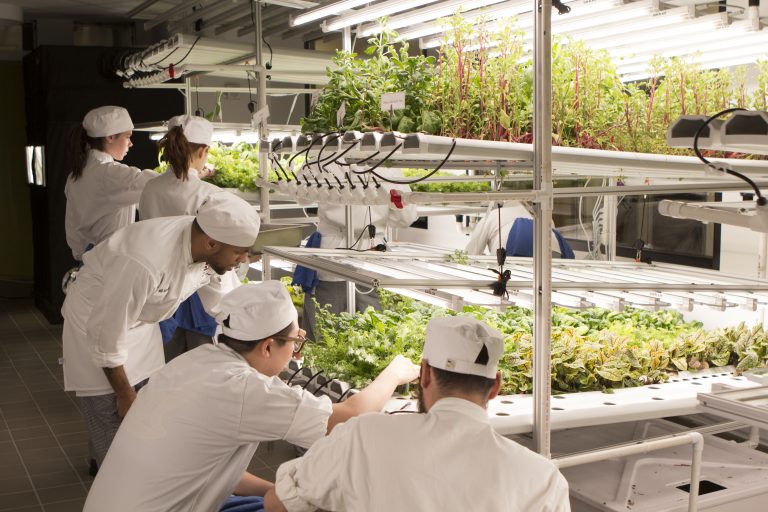As the world’s population continues to grow, urban, hydroponic farming seems an increasingly viable option for feeding the world well and nutritiously. With just light, water and few other little factors, you can grow a tremendous amount of food indoors vertically — meaning growing crops upward, rather than in the ground, which exponentially increases the available surface area for planting.
Providing nutritious food is important to me; not just for me personally, but also with respect to a program I work with called Wellness in the Schools, an organization dedicated to exposing school children to nutritious, better quality food. Some of our schools have “tower gardens,” which are 6- to 8-foot structures that we use as indoor teaching gardens. It makes sense to start teaching our future chefs about hydroponic farming, too — which is what we’re doing at ICE.

When I was approached by the team at ICE about the opportunity to become the school’s Director of Sustainability, I was intrigued by the challenge of helping to bridge their hydroponic farm to the classroom. The school has an amazing indoor garden right in their facility. Culinary and pastry students have the ability to plant, grow and harvest food that they will cook and bake with in their class lessons.
There are many reasons why this is a great learning opportunity for students. The school can grow many varieties of one type of herb and students can go into the garden, harvest those herbs and taste the difference for themselves right then and there. This exercise develops students’ palates and teaches them how to explore and utilize a range of ingredients when creating a dish.
The farm has grown an incredible 200-plus varieties of herbs and produce to date — exposure to so many new flavor profiles can help these future chefs to start thinking about taste, flavor pairing and being creative in the kitchen. Plus, they learn how to grow and harvest their own herbs and produce onsite — it doesn’t get more local and sustainable than that.

During my first session in the farm with the farm manager, David Goldstein, I spent the entire time learning about what has been grown before, what grows well and how fast things can grow in this environment. And he had me taste…and taste…and taste! It was quite a revelation. I tasted flowers that were sweet. I saw whole fennel plants, from bulb to foliage to seeds. I tasted kale in different stages of growth and noticed how the flavor developed at each stage.
David also had me try lemon marigolds; I never thought about tasting the tiny leaves of this miniature variety. Tasting them for the first time, my mind immediately started thinking about what to pair them with (and hoping David would grow some for me for a dish at Oceana, where I am executive chef). I want the students to have these kinds of revelations that come from experience in the kitchen and exposure to flavors like the ones that ICE’s hydroponic farm provides.

The farm is a great asset for the instructors and the students. Yes, we need to teach culinary students technique. But we also want them to think creatively about cooking and flavors once they master the technique and are out in the field. I hope they’ll remember their time “on the farm,” tasting and learning about flavors and the endless possibilities of the plate.
Interested in studying at ICE? Learn more about ICE’s career programs.




